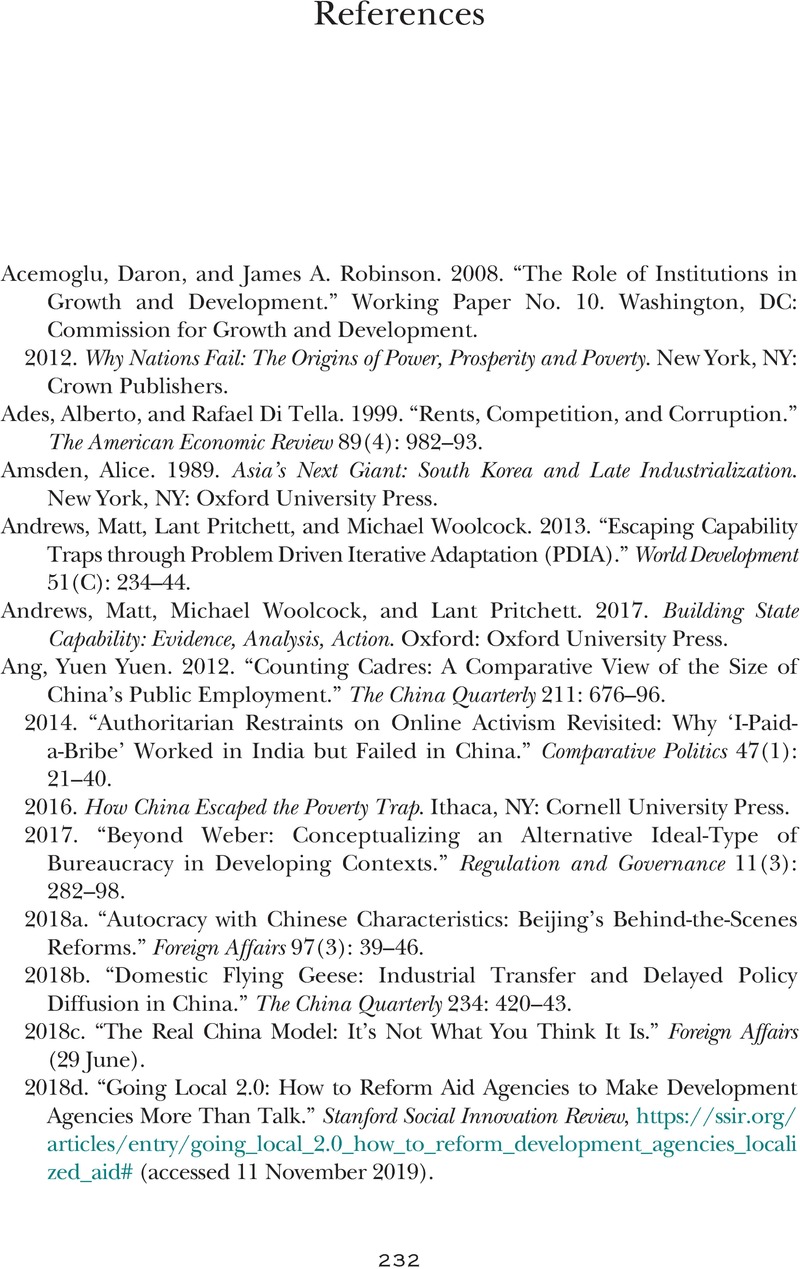Book contents
- China’s Gilded Age
- China’s Gilded Age
- Copyright page
- Dedication
- Contents
- Figures
- Tables
- Acknowledgments
- Chapter 1 Introduction: China’s Gilded Age
- Chapter 2 Unbundling Corruption across Countries
- Chapter 3 Unbundling Corruption over Time
- Chapter 4 Profit-Sharing, Chinese-Style
- Chapter 5 Corrupt and Competent
- Chapter 6 All the King’s Men
- Chapter 7 Rethinking Nine Big Questions
- Appendix
- References
- Index
- References
References
Published online by Cambridge University Press: 08 May 2020
- China’s Gilded Age
- China’s Gilded Age
- Copyright page
- Dedication
- Contents
- Figures
- Tables
- Acknowledgments
- Chapter 1 Introduction: China’s Gilded Age
- Chapter 2 Unbundling Corruption across Countries
- Chapter 3 Unbundling Corruption over Time
- Chapter 4 Profit-Sharing, Chinese-Style
- Chapter 5 Corrupt and Competent
- Chapter 6 All the King’s Men
- Chapter 7 Rethinking Nine Big Questions
- Appendix
- References
- Index
- References
Summary

- Type
- Chapter
- Information
- China's Gilded AgeThe Paradox of Economic Boom and Vast Corruption, pp. 232 - 248Publisher: Cambridge University PressPrint publication year: 2020



